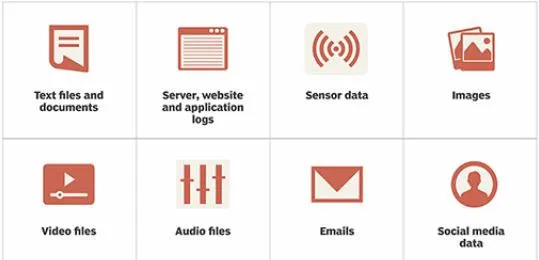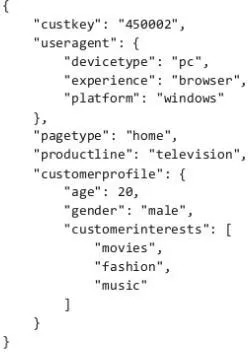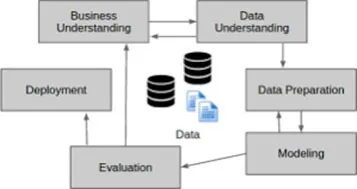
Practical Data Science with Jupyter
Explore Data Cleaning, Pre-processing, Data Wrangling, Feature Engineering and Machine Learning using Python and Jupyter
- English
- ePUB (mobile friendly)
- Available on iOS & Android
Practical Data Science with Jupyter
Explore Data Cleaning, Pre-processing, Data Wrangling, Feature Engineering and Machine Learning using Python and Jupyter
About this book
Solve business problems with data-driven techniques and easy-to-follow Python examples
Key Features
- Essential coverage on statistics and data science techniques.
- Exposure to Jupyter, PyCharm, and use of GitHub.
- Real use-cases, best practices, and smart techniques on the use of data science for data applications.
Description
This book begins with an introduction to Data Science followed by the Python concepts. The readers will understand how to interact with various database and Statistics concepts with their Python implementations. You will learn how to import various types of data in Python, which is the first step of the data analysis process. Once you become comfortable with data importing, you will clean the dataset and after that will gain an understanding about various visualization charts. This book focuses on how to apply feature engineering techniques to make your data more valuable to an algorithm. The readers will get to know various Machine Learning Algorithms, concepts, Time Series data, and a few real-world case studies. This book also presents some best practices that will help you to be industry-ready.This book focuses on how to practice data science techniques while learning their concepts using Python and Jupyter. This book is a complete answer to the most common question that how can you get started with Data Science instead of explaining Mathematics and Statistics behind the Machine Learning Algorithms.
What you will learn
- Rapid understanding of Python concepts for data science applications.
- Understand and practice how to run data analysis with data science techniques and algorithms.
- Learn feature engineering, dealing with different datasets, and most trending machine learning algorithms.
- Become self-sufficient to perform data science tasks with the best tools and techniques.
Who this book is for
This book is for a beginner or an experienced professional who is thinking about a career or a career switch to Data Science. Each chapter contains easy-to-follow Python examples.
Table of Contents
1. Data Science Fundamentals
2. Installing Software and System Setup
3. Lists and Dictionaries
4. Package, Function, and Loop
5. NumPy Foundation
6. Pandas and DataFrame
7. Interacting with Databases
8. Thinking Statistically in Data Science
9. How to Import Data in Python?
10. Cleaning of Imported Data
11. Data Visualization
12. Data Pre-processing
13. Supervised Machine Learning
14. Unsupervised Machine Learning
15. Handling Time-Series Data
16. Time-Series Methods
17. Case Study-1
18. Case Study-2
19. Case Study-3
20. Case Study-4
21. Python Virtual Environment
22. Introduction to An Advanced Algorithm - CatBoost
23. Revision of All Chapters' Learning
About the Author
Prateek Gupta is a Data Enthusiast and loves data-driven technologies. Prateek has completed his B.Tech in Computer Science & Engineering and he is currently working as a Data Scientist in an IT company. Prateek has a total 9 years of experience in the software industry, and currently, he is working in the computer vision area. Prateek has implemented various end-to-end Data Science projects for fishing, winery, and ecommerce clients. His implemented object detection and recognition models and product recommendation engines have solved many business problems of various clients. His keen area of interest is in natural language processing and computer vision. In his leisure time, he writes posts about artificial intelligence in his blog. Blog links: http://dsbyprateekg.blogspot.com/
LinkedIn Profile: https://www.linkedin.com/in/prateek-gupta-64203354/
Frequently asked questions
- Essential is ideal for learners and professionals who enjoy exploring a wide range of subjects. Access the Essential Library with 800,000+ trusted titles and best-sellers across business, personal growth, and the humanities. Includes unlimited reading time and Standard Read Aloud voice.
- Complete: Perfect for advanced learners and researchers needing full, unrestricted access. Unlock 1.4M+ books across hundreds of subjects, including academic and specialized titles. The Complete Plan also includes advanced features like Premium Read Aloud and Research Assistant.
Please note we cannot support devices running on iOS 13 and Android 7 or earlier. Learn more about using the app.
Information
CHAPTER 1
Data Science Fundamentals
Structure
- What is data?
- What is data science?
- What does a data scientist do?
- Real-world use cases of data science
- Why Python for data science?
Objective
What is data?
Structured data

Unstructured data

Semi-structured data

What is data science?

What does a data scientist do?

Real-world use cases of data science
- Google’s AI research arm is taking the help of data scientists to build the best performing algorithm for automatically detecting objects.
- Amazon has built a product recommendation system to personalize their product.
- Santander Group of Bank has built a model with the help of data scientists to identify the value of transactions for each potential customer.
- Airbus in the maritime industry is taking the help of data scientists to build a model that detects all ships in satellite images as quickly as possible to increase knowledge, anticipate threats, trigger alerts, and improve efficiency at sea.
- YouTube is using an automated video classification model in limited memory.
- Data scientists at the Chinese internet giant Baidu Inc. released details of a new deep learning algorithm that they claim can help pathologists identify tumors more accurately.
- The Radiological Society of North America (RSNA®) is using an algorithm to detect a visual signal for pneumonia in medical images which automatically locate lung opacities on chest radiographs.
- The Inter-American Development Bank is using an algorithm that considers a family’s observable household attributes like the material of their walls and ceiling, or the assets found in the home to classify them and predict their level of need.
- Netflix data uses data science skills on the movie viewing patterns to understand what drives user interest and uses that to make decisions on which Netflix original series to produce.
Why Python for data science?
Table of contents
- Cover Page
- Title Page
- Copyright Page
- Dedication Page
- About the Author
- Acknowledgement
- Preface
- Errata
- Table of Contents
- 1. Data Science Fundamentals
- 2. Installing Software and System Setup
- 3. Lists and Dictionaries
- 4. Package, Function, and Loop
- 5. NumPy Foundation
- 6. Pandas and DataFrame
- 7. Interacting with Databases
- 8. Thinking Statistically in Data Science
- 9. How to Import Data in Python?
- 10. Cleaning of Imported Data
- 11. Data Visualization
- 12. Data Pre-processing
- 13. Supervised Machine Learning
- 14. Unsupervised Machine Learning
- 15. Handling Time-Series Data
- 16. Time-Series Methods
- 17. Case Study-1
- 18. Case Study-2
- 19. Case Study-3
- 20. Case Study-4
- 21. Python Virtual Environment
- 22. Introduction to An Advanced Algorithm - CatBoost
- 23. Revision of All Chapters’ Learning
- Index